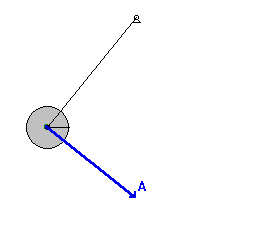Pendulum
A pendulum is a weight suspended from a pivot so it can swing freely.
When a pendulum is displaced from its resting equilibrium position, it is subject to a restoring force due to gravity that will accelerate it back toward the equilibrium position. When released, the restoring force will cause it to oscillate about the equilibrium position, swinging back and forth. The time for one complete cycle, a left swing and a right swing, is called the period. From its discovery around 1602 by Galileo Galilei the regular motion of pendulums was used for timekeeping, and was the world's most accurate timekeeping technology until the 1930s. Pendulums are used to regulate pendulum clocks, and are used in scientific instruments such as accelerometers and seismometers. Historically they were used as gravimeters to measure the acceleration of gravity in geophysical surveys, and even as a standard of length. The word 'pendulum' is new Latin, from the Latin pendulus, meaning 'hanging'.[3]
The simple gravity pendulum] is an idealized mathematical model of a pendulum.] This is a weight (or bob) on the end of a massless cord suspended from a pivot, without friction. When given an initial push, it will swing back and forth at a constant amplitude. Real pendulums are subject to friction and air drag, so the amplitude of their swings declines.[1]
